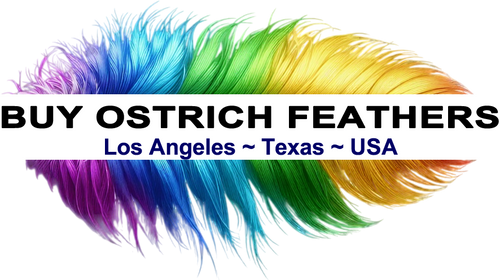Discover how ostrich feathers are ethically sourced, naturally dyed using ancient techniques, and expertly processed for fashion, decor, and ceremonial use.
Introduction
Ostrich feathers have captivated designers and crafters for centuries with their luxurious texture and dramatic flair. But how do these magnificent plumes transform from raw farm materials to vibrant fashion statements? This guide reveals the fascinating natural dyeing and processing methods that prepare ostrich feathers for decorative, ceremonial, and artistic uses worldwide.
The Journey from Farm to Workshop
Ethical Sourcing Practices
- Feathers are humanely gathered during molting seasons
- No ostriches are harmed in responsible harvesting
- Farms adhere to international wildlife trade regulations
Initial Cleaning Process
- Dust Removal: Feathers are gently shaken or air-blown
- Sanitization: Washed in mild, natural disinfectants
- Drying: Hung in climate-controlled spaces for 2-3 days
Traditional Natural Dyeing Techniques
Plant-Based Dyes
- Turmeric: Creates vibrant yellows
- Beetroot: Produces rich pinks and reds
- Indigo: For deep blue hues
- Walnut Hulls: Earthy brown tones
Mineral Mordants
- Alum (brightens colors)
- Iron (darkens shades)
- Tin (intensifies vibrancy)
The Dyeing Process Step-by-Step
- Feathers are soaked in mordant solution
- Simmered in dye baths at precise temperatures
- Rinsed in pH-balanced water
- Air-dried on curved racks to maintain shape
Modern Eco-Friendly Processing
Chemical-Free Preservation
- Essential oil treatments prevent insect damage
- Cornstarch absorbs residual moisture
- Natural lanolin restores feather oils
Color-Safe Maintenance
- UV-protective storage prevents fading
- Silica gel packets control humidity
- Breathable cotton wrapping avoids compression
Quality Grading System
Feather Classification
| Grade | Characteristics | Common Uses |
|---|---|---|
| A | 16-24" length, perfect symmetry | High fashion, costumes |
| B | 12-16", minor imperfections | Craft projects, accessories |
| C | 6-12", irregular shapes | DIY decor, floral arrangements |
Specialty Finishing Techniques
Hand-Curling Methods
- Steam shaping for permanent curls
- Vintage-style hand-crimping
- Natural wave enhancement
Tip Treatments
- Gold/silver leaf gilding
- Ombré dip-dye effects
- Pearlized acrylic coatings
Caring for Dyed Ostrich Feathers
Cleaning Guidelines
- Light dusting with feather duster
- Spot cleaning with damp microfiber
- Professional dry cleaning for elaborate pieces
Storage Recommendations
- Hang in garment bags
- Avoid plastic (causes moisture buildup)
- Use acid-free tissue for folded storage
Frequently Asked Questions
Are dyed ostrich feathers colorfast?
Quality naturally-dyed feathers retain color for 5+ years with proper care. Modern dyes can last a decade.
Can I re-dye feathers at home?
Possible but challenging. Professional re-dyeing is recommended to maintain integrity.
Why do some feathers cost more than others?
Pricing reflects plume size, dye complexity, and labor-intensive hand-processing.
How are white feathers produced?
Natural cream feathers are carefully bleached using oxygen-based whiteners, not harsh chemicals.
Conclusion
From ancient Egyptian headdresses to modern millinery masterpieces, ostrich feathers continue to inspire because of these meticulous artisanal processes. By understanding their journey from farm to final product, we better appreciate both their beauty and the sustainable practices that preserve this ancient craft.

